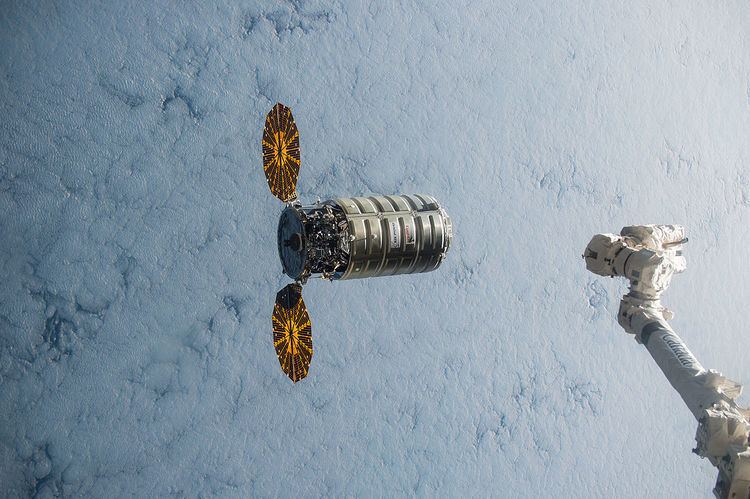Mission type ISS resupply COSPAR ID 2015-072A Mission duration Final: 76 days | Operator Orbital ATK SATCAT no. 41101 Spacecraft Cygnus 5 | |
 | ||
Cygnus CRS OA-4, also known as Orbital Sciences CRS Flight 4 was the fourth successful flight of the Orbital ATK uncrewed resupply spacecraft Cygnus and its third flight to the International Space Station under the Commercial Resupply Services contract with NASA. With the Antares rocket undergoing a redesign following its failure during the Orb-3 launch, OA-4 was launched by an Atlas V rocket. Following three launch delays due to inclement weather beginning on 3 December 2015, OA-4 was launched at 21:44 UTC on 6 December 2015. With a liftoff weight of 7,492 kilograms (16,517 lb), OA-4 became the heaviest payload ever launched on an Atlas V. The spacecraft rendezvoused with and was berthed to the ISS on 9 December 2015. It was released on 19 February 2016 after 72 days at the station. Deorbit occurred on 20 February at approximately 16:00 UTC.
Contents
Spacecraft
OA-4 was the fourth of eight flights by Orbital ATK under the Commercial Resupply Services contract with NASA and the inaugural flight of the larger Enhanced Cygnus PCM. The mission was originally scheduled for 1 April 2015. The Atlas 5 rocket launched in the 401 vehicle configuration with a four-meter fairing, no solid rocket boosters and a single-engine Centaur upper stage.
In an Orbital Sciences tradition, this Cygnus spacecraft was named Deke Slayton II after one of NASA's original Mercury Seven astronauts and Director of Flight Operations, who died in 1993. This spacecraft reuses the name Deke Slayton, originally applied to the Orb-3 spacecraft which was lost in an Antares rocket explosion in October 2014.
Manifest
The mission was the first flight of the enhanced variant of Orbital ATK's Cygnus spacecraft, capable of delivering more than 7,700 pounds of essential crew supplies, equipment and scientific experiments to the station.
Total cargo: 3,349 kg (7,383 lb)
Total cargo with packing material: 3,513 kg (7,745 lb)
